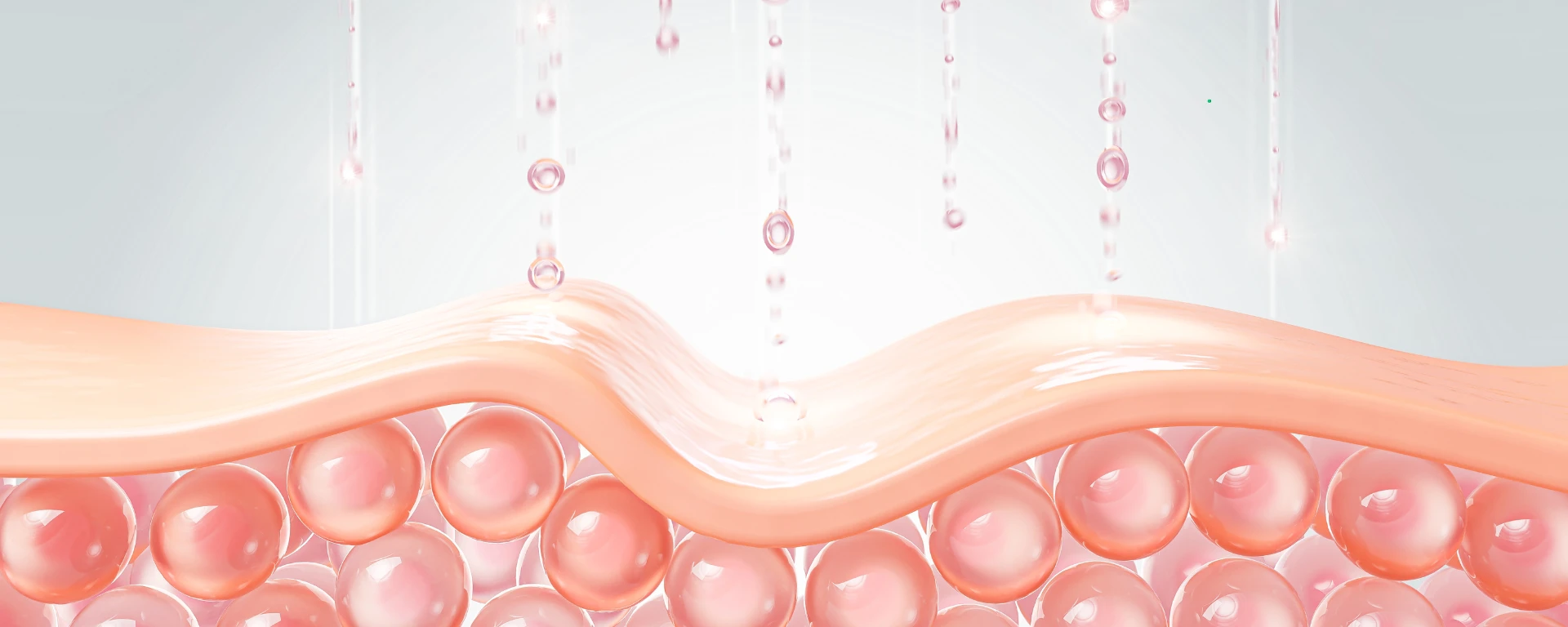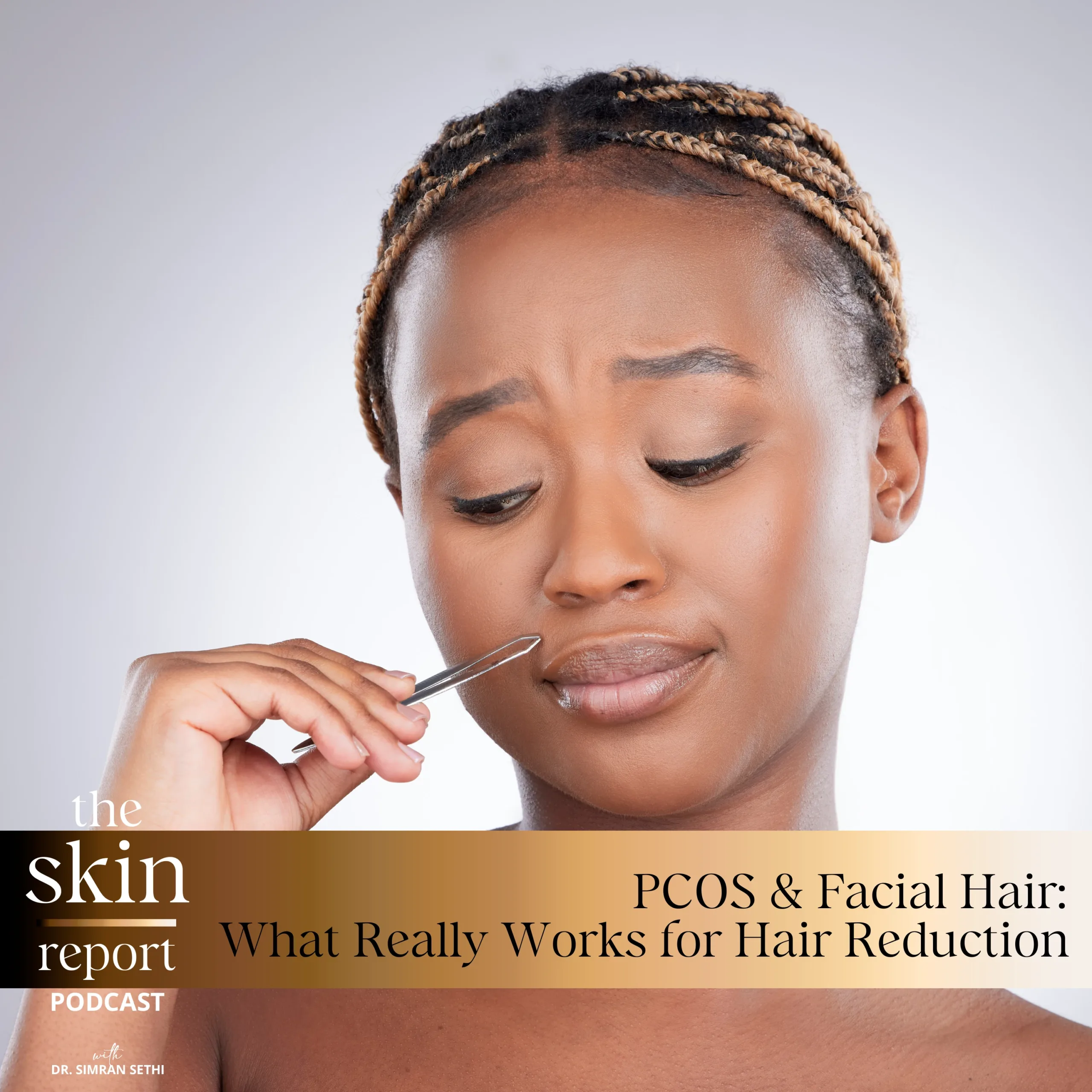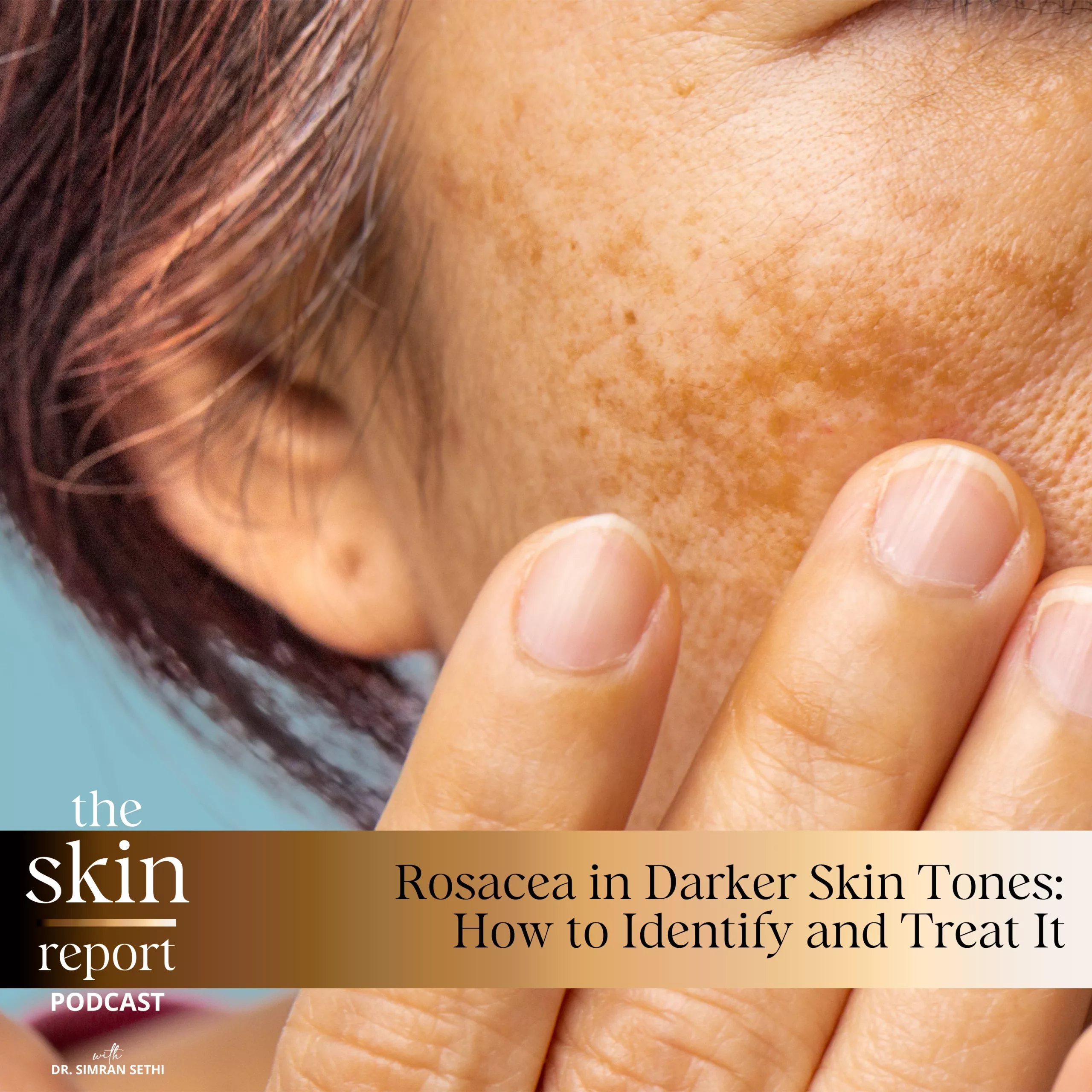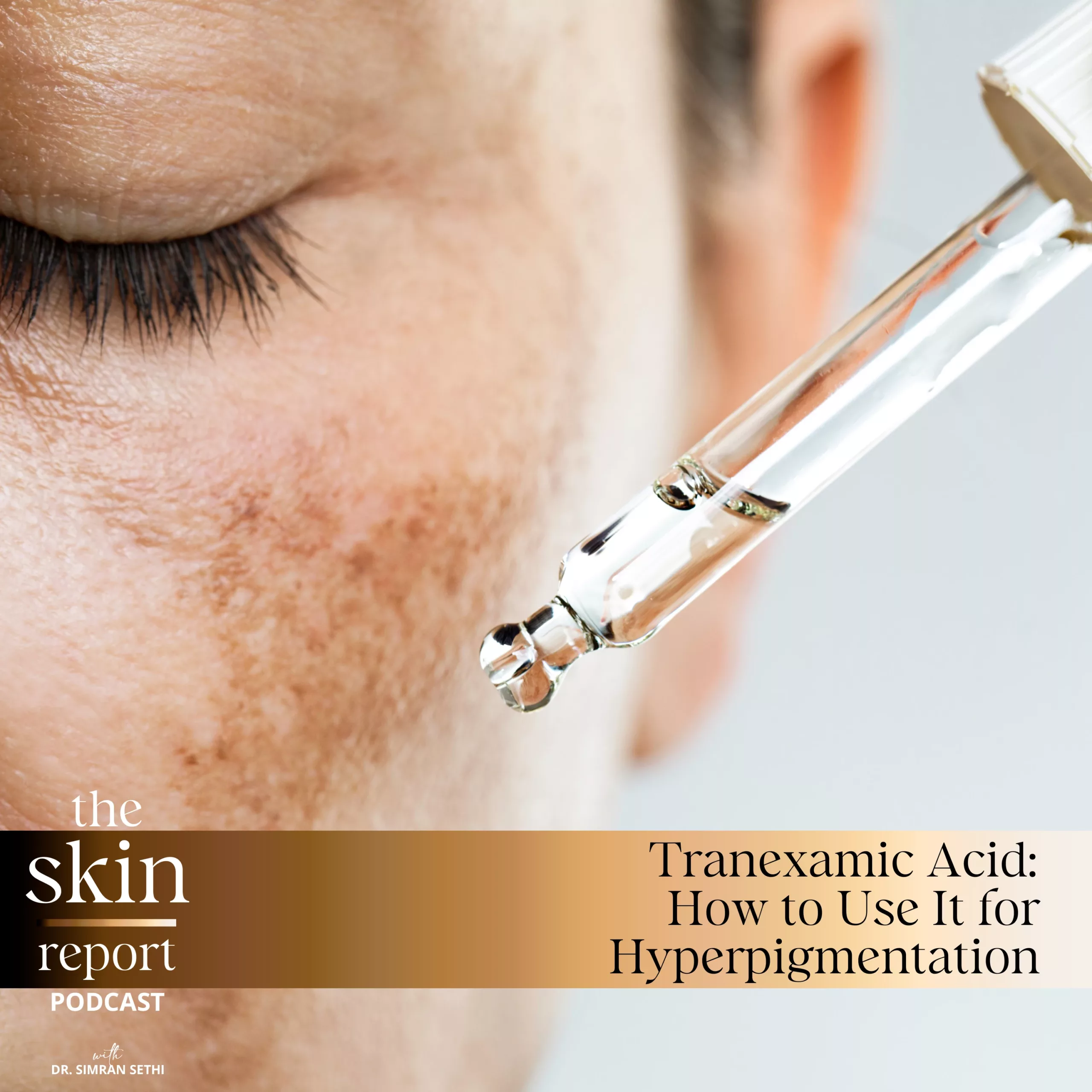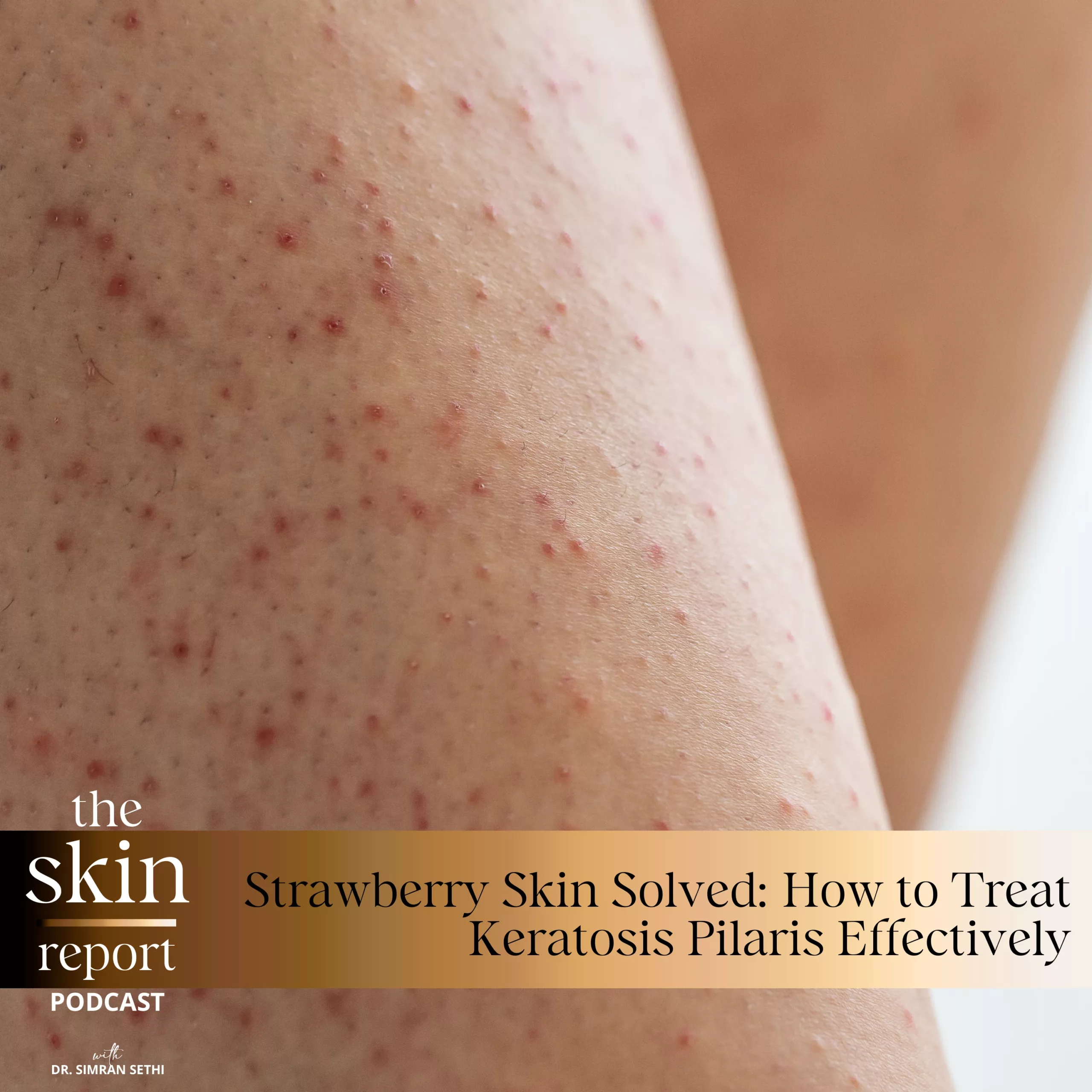Hello everyone. Welcome back to the Skin Report. We are going to discuss a very exciting topic, exosomes versus stem cells, specifically in skincare and skin treatments. They’re different. How are they different. Actually, what are they, and how are these used in aesthetic treatments in skincare, and do they actually work? So we’re going to cover a lot today, and it is a very innovative topic that a lot of people ask questions about, both online and in my practice as well. I’m Dr. Simran Sethi, a board-certified internal medicine doctor who also specializes in medical aesthetics. Let’s get started.
What are stem cells and what are exosomes? Stem cells are cells that we all contain. We are all born with a lot of stem cells. Think of stem cells as these sort of rudimentary basic cells that contain a lot of information that will tell a cell to turn into a new kind of cell. So what that means is it is not a cell in the bone. It’s not a kidney cell. It’s not a skin cell, but it has the information to convert into one of those cells, and we call that cell differentiation. And because stem cells have so much genetic information, they can also be implanted or put into certain types of tissue to create new cells. Most of the times, you see a lot of research being done in spinal cord injury patients. When people have an injured spinal cord, there is research showing that if you inject them with stem cells, it will message that part of the body, the spinal cord, to make new neurons and basically allow that person to have a new spinal cord and new nerves and regain function.
So, stem cells have become very, very, very big in medicine. And more recently, they’re starting to get used in fields like regenerative medicine where stem cells are used for repair of injuries in different joints or also in aesthetics. So, stem cells basically are things that we all have and they contain information for cells. It’s kind of baby cells to become a different type of more mature cell.
Now, what are exosomes? So, exosomes and stem cells are often confused because exosomes are sort of… Think of them as little bags of information that kind of surround stem cells. So, stem cells are actual cells in our body while exosomes are not cells. They’re little bags of information, they’re nanoparticles, they’re tiny, and they circulate in our blood, and their job is to carry information, kind of like a mailman. They’re taking a packet of information from one place to another, and they’re going to get on a cell receptor and signal it to do something.
And in aesthetic medicine, that means we can use exosomes to carry information to signal our skin cells to make new skin cells that are younger, better, and so forth. So, exosomes and stem cells are used in aesthetic medicine for reduction of fine lines, for skin tightening, for hair growth. We find that they’re very effective. I will say that we haven’t had any large clinical studies that show thousands of people being treated with stem cells or exosomes and them showing a certain percentage of improvement. There are smaller studies done all around the world that show this improvement, but I like to say that because I think that it would be a false claim if we said that they’ve been proven in that at that scale. So now that we’ve talked about stem cells and exosomes, a lot of you are probably wondering where do they come from.
Stem cells are derived from umbilical cords. Now, in the United States, stem cells have been isolated from people who have consented the retrieval of stem cells from their umbilical cords. If you are getting a stem cell treatment from a licensed physician in the United States, the source of those stem cells is a legitimate source, consented source. Because stem cells are taken from human umbilical cords, they’re not vegan. I have seen a few websites say that stem cells are vegan. That would not be a true claim. They are, I guess, cruelty-free because they’re consented, but they’re definitely not vegan. And then I would also say they’re not organic. So, that is how stem cells are retrieved. Exosomes are actually retrieved in the exact same way. Exosomes are not stem cells, they’re not cells, but they’re also retrieved at the same time as stem cells are retrieved from mesenchymal cells in the umbilical cord, again, in a process where the patient is consenting retrieval of these.
Stem cells and exosomes are usually, when they’re retrieved, they’re stored in a cryobank, and then from there, they’re distributed to pharmacies and aesthetic providers. So, that’s how stem cells and exosomes are retrieved. In that sense, they’re very similar. We’ve covered what are stem cells, what are exosomes, how are they retrieved. Next, let’s go into who should use them or who can use them. So, stem cells and exosomes both induce repair, superior repair, faster repair. They are very expensive treatments. Stem cells are exponentially more expensive than exosomes because, remember, they are actual human cells, and just retrieving them, of course, is a very complex, involved process. Human stem cells, in my opinion, at this time, are not really something that we need in aesthetic medicine. They are great options for maybe someone who has had third degree burns on a large percentage of their body, and that’s not something we see in aesthetic practices.
For use in aesthetics, I think exosomes have a lot of room and potential and are actually being used with very good results. I have a separate video where I talk about exosomes in aesthetic treatments, and I would urge you to check that out because we have a lot more detail there. Now, we see skin care that has stem cells and exosomes. Is that skin care effective, and who should use it? I already told you stem cells are very, very, very expensive and they are derived from human umbilical cords. There isn’t any skin care product that has human stem cells in them. There are skin care products that have plant stem cells in them, and some have fish stem cells in them. Those are, in my opinion, again, not effective. And I’m not just telling you that because it’s my opinion, but I’m going to give you the scientific reason behind it.
To create an effect on your cells, you have to have receptors on your cell that are spoken to and told to do something in your cell. Humans have receptors that can only be triggered by human signals or signals derived from humans, which is why exosomes in skin care that are human exosomes are actually going to be effective.
Exosomes or stem cells from plants or any non-human source are not going to effectively speak to our human receptors, which is why they will not produce an effect. So if you are looking at purchasing a skin care product that has plant stem cells, fish stem cells, you are likely not going to get the same effect as something that has human exosomes, which is why I don’t know if that’ll be effective.
Today’s topic was pretty robust and I’ve only scratched the surface, but I would love to hear any comments from you if you’ve used skin care that has exosomes or are using exosomes or stem cells in your own aesthetic practice. Remember, we love it when you can leave us a review. Also, subscribe, push that notification button so that you always know when we have new content released.

